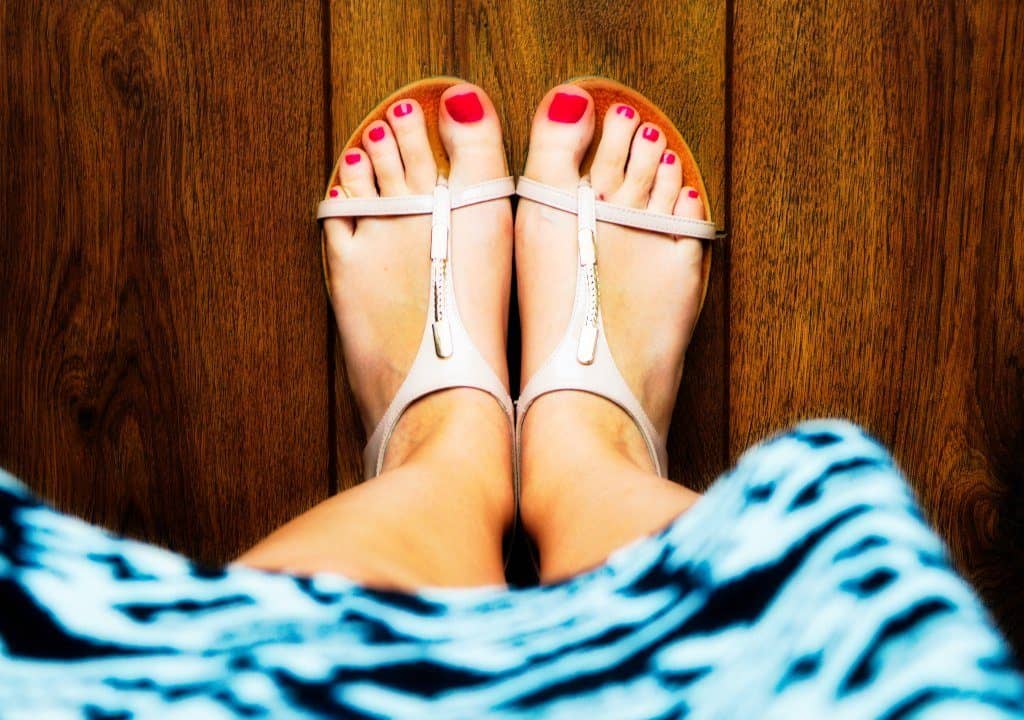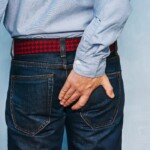Biodecoding suggests that each toe reflects emotional and familial aspects that can cause physical ailments. Let us examine how the maternal role, self-esteem, communication, and territorial defense influence the body, offering an integrative perspective on the mind-body connection.
How Biodecoding Explains Emotional Conflicts in the Toes
Would you like to enjoy an interactive podcast-style summary?
In practice, many people have found answers through biodecoding for ailments that didn’t improve with conventional treatments or have gained a deeper understanding of the emotional roots of their conditions.
Specifically, the symbolism associated with the toes addresses themes such as the maternal figure, self-esteem, communication, anger management, and the defense of personal territory. This article explores in detail the emotional connections biodecoding suggests for each toe, aiming to provide a comprehensive perspective that fosters reflection and self-awareness.
The New Mesoderm and Self-Esteem: Foundations of Podal Biodecoding
A fundamental pillar for understanding biodecoding in the toes lies in the so-called “new mesoderm”, a tissue responsible for aspects related to movement, self-worth, and self-esteem. The concept of “worth” transcends monetary value, referring instead to how individuals perceive their capabilities and strength in facing life’s challenges.
When someone experiences a crisis of self-esteem or feels a lack of self-worth, it’s possible that changes occur in the toes (pain, blisters, calluses, or deformities). These physical signs can be interpreted as the body’s manifestation of insecurity or a sense of inadequacy in meeting external demands.
Biodecoding, however, doesn’t solely focus on symptom relief through emotional understanding.
Its broader goal is to help individuals become aware of hidden conflicts so they can reconfigure patterns, beliefs, and behaviors that cause pain or discomfort. In this way, the feet—and especially the toes—become messengers that inform us about what needs emotional balance.
The Foot as a Symbol of the Mother and Maternal Function
Perhaps one of the most highlighted elements in podal biodecoding is the direct relationship between the feet and the maternal figure.
Any emotional conflict associated with the mother (or with the motherhood of the individual experiencing the symptom) could symbolically impact the condition of the feet. In other words, if someone harbors resentment, sadness, or bitterness toward their mother, or feels pain regarding their role as a mother, they may experience pain, dryness, calluses, or recurrent injuries.
In this view, the entire foot is likened to a nurturing vessel (the mother), and the toes act as “straws” or extensions drawing from that source. When the relationship with the mother is fluid and fulfilling, the foot and toes remain healthy. Conversely, unresolved conflicts may manifest in physical symptoms that require attention.
The goal is not to blame the mother but to recognize that many childhood experiences and family dynamics influence our emotional and, consequently, physical state. This approach encourages a mature and objective review of how one feels about their mother, potentially involving reconciliation or emotional release.
The Big Toe (Hallux): The Axis of the Mother and the Ego
The big toe, known as the hallux, directly represents the mother and also our ego.
With each step, the big toe helps balance the body, symbolically reflecting how we manage self-love and our relationship with the maternal figure. Its importance for physical stability makes it one of the first areas to exhibit discomfort or deformities during times of inner tension.
- Inner side of the big toe
The area touching the second toe is often associated with “material” conflicts related to the mother. This might involve constant financial demands, feelings of inadequacy despite efforts, or any situation involving resource exchange (money, time, care). Blisters, cracks, or dryness in this area might signify pressure, expectations, or a lack of mutual understanding in material or practical matters. - Outer side of the big toe
The area where a “bunion” or protuberance often forms also signifies emotional conflicts with the mother or oneself as a mother. When the big toe twists or tucks under the second toe, it symbolizes difficulty in expressing and asserting emotional needs. The physical deformation reflects a dynamic where one’s voice is overshadowed, accompanied by silent tension.
The Second Toe: Collaterals and Accumulated Conflicts
The toe next to the big toe, referred to as the “second digit of the foot,” symbolizes conflicts with close relationships: siblings, cousins, partners, or close friends.
These individuals are referred to as “collaterals” in this practice. Unresolved differences, poor communication, and accumulated tension may somatize as calluses, friction, or fractures in this area.
Another noteworthy aspect is the tendency to “accumulate” unresolved issues.
The second toe becomes an indicator of carrying unprocessed grievances, postponed situations, or unaddressed rifts due to fear, convenience, or lack of communication skills. Over time, this accumulation may lead to an emotional outburst or major conflict, which manifests physically.
The Third Toe: Communication and Connection with the World
Biodecoding describes the third toe as the mediator of communication with the world.
Individuals who fear expressing themselves, doubt their ability to articulate their ideas, or frequently face misunderstandings may experience issues with this toe. Simply refraining from speaking one’s mind—due to fear of rejection or confrontation—can impact this specific area of the body.
In a family context, if someone feels compelled to withhold opinions or feels invalidated by parents, siblings, or relatives, the third toe might develop blisters, bruises, or other symptoms. Similarly, those who believe “what I say doesn’t matter” or who withdraw into protective silence may somatize frustrations in this region.
The Fourth Toe: Resentment, Envy, and Accumulated Anger
The so-called “ring toe” of the foot, corresponding to the fourth toe, is linked to emotions like resentment, fury, jealousy, and irritation.
Unresolved experiences of injustice, false accusations, hurtful criticism, or situations lacking closure may store tension in this toe.
If these emotions remain unprocessed, they might manifest as pain, inflammation, or irregularities in the fourth toe. Behavioral changes—such as impulsiveness or temperamental tendencies—may also accompany these physical symptoms. This toe serves as a constant reminder of trapped toxic emotions that need conscious management.
The Fifth Toe (Pinky): Territorial Defense
The pinky toe, though the smallest, holds immense symbolic significance in biodecoding: territorial defense.
In nature, animals mark and protect their vital space, which, for humans, translates to safeguarding home, personal space, family, and a sense of belonging. However, this “territory” isn’t solely physical but also emotional and symbolic.
When someone feels powerless to defend what’s theirs or perceives their boundaries being crossed, the pinky toe often twists or “hides” behind the other toes. This lack of firmness in setting limits—perhaps due to insecurity or fear of confrontation—may result in a weak or withdrawn pinky toe.
On the other hand, as people develop confidence and assertiveness in defending their principles, family, or spaces, the pinky toe tends to appear straighter and more stable. Biodecoding suggests this observation reflects profound changes in self-esteem and self-perception.
Footwear, Posture, and the Importance of Body Awareness
Of course, posture and footwear choices significantly affect foot health.
While wearing improper shoes can damage bone structure and cause blisters, the manifestation in a specific toe may point to underlying emotional conflicts.
Thus, the suggestion isn’t to abandon traditional physical care but to complement it with a deep exploration of emotions and inner conflicts. Body awareness becomes essential: observing how we walk, whether we place more weight on one side of the foot, or whether tension is felt in specific areas. Additionally, recognizing patterns of thought or reaction linked to physical discomfort is key.
A Holistic Perspective on Health and Well-Being
In an increasingly fast-paced world, biodecoding encourages listening to what the body is trying to communicate.
Far from being a panacea, many see it as an insightful tool for understanding the connection between emotional experiences and physical symptoms. For some, paying attention to the toes and their potential meanings offers a powerful starting point for self-awareness.
The collaboration between medical science and complementary therapies has often been challenging. Yet, more people advocate for a holistic approach that considers the whole person. Within this context, biodecoding holds a relevant role: it provides a narrative linking biological, psychological, and symbolic aspects, deepening our understanding of symptoms and the body itself.
Biodecoding in the toes invites personal reflection on how emotional and familial experiences might influence foot health. It asserts that the body and mind continuously communicate, with the feet serving as messengers of what lies deep within us. Understanding this symbolic language fosters a better relationship with oneself and encourages healthier connections with others.
Master Ruada — Biodecoding and Alternative Medicine
Transform your emotional and spiritual life with a personalized tool
Discover the power of Biodecoding combined with Kabbalah. Through your Personal Kabbalistic Tree, designed based on your name and date of birth, you’ll receive a practical guide to work on your emotions and achieve holistic well-being.





